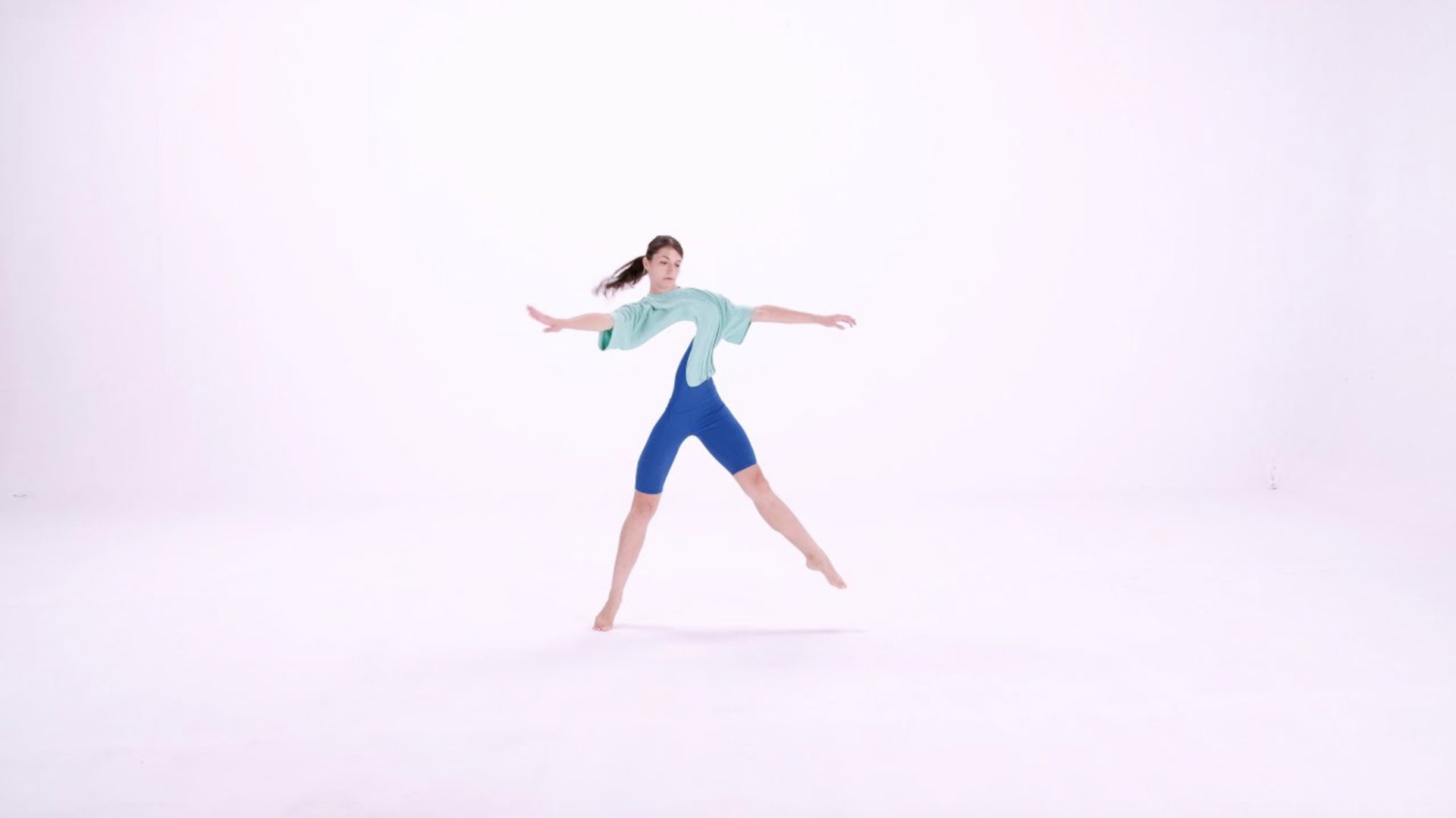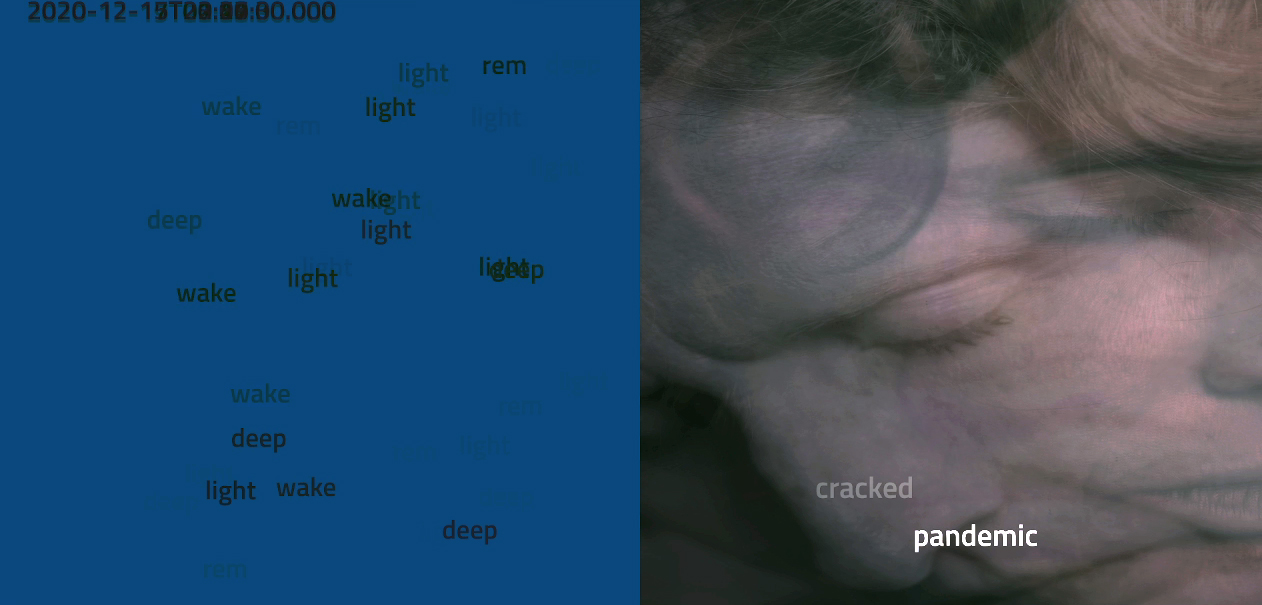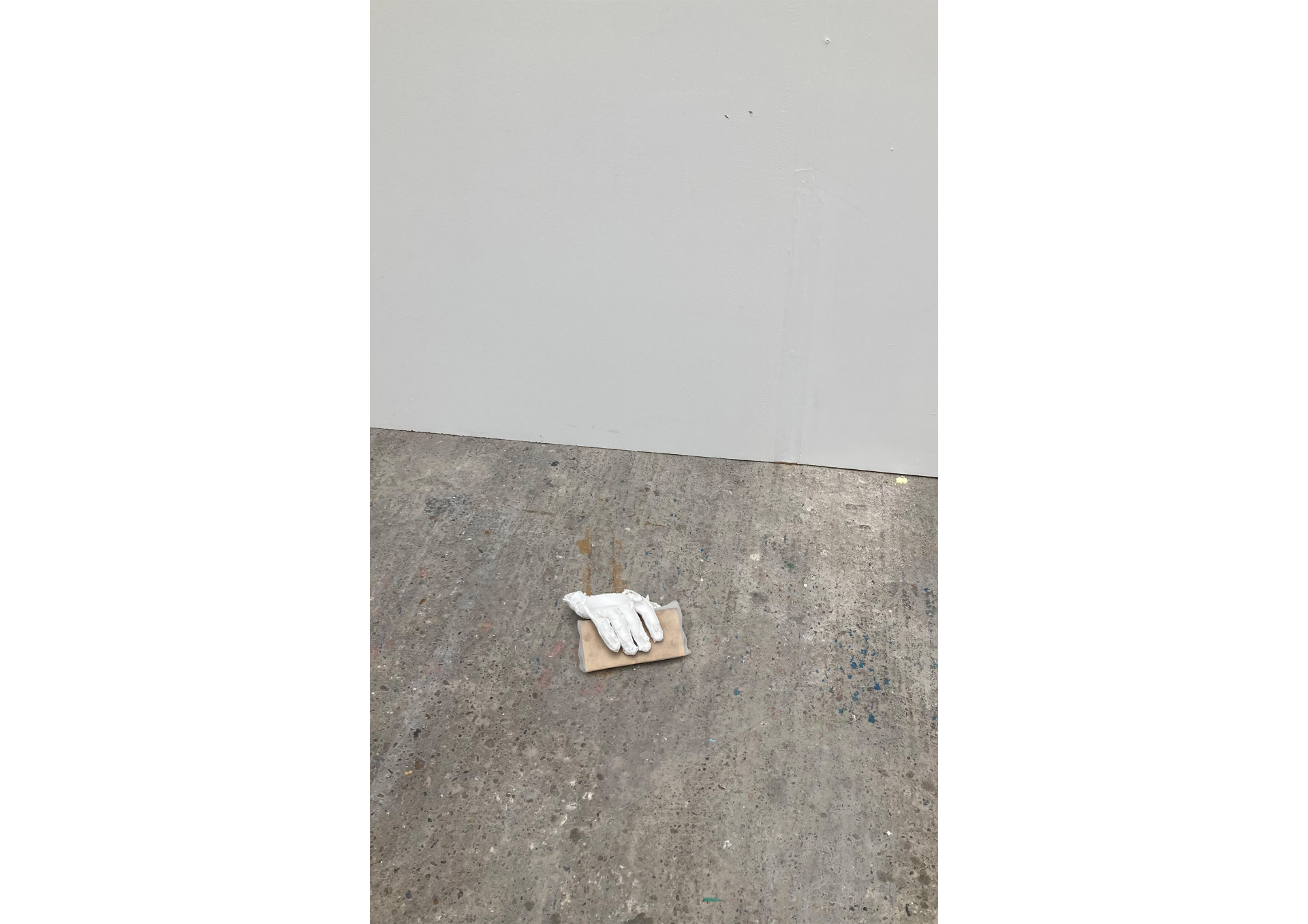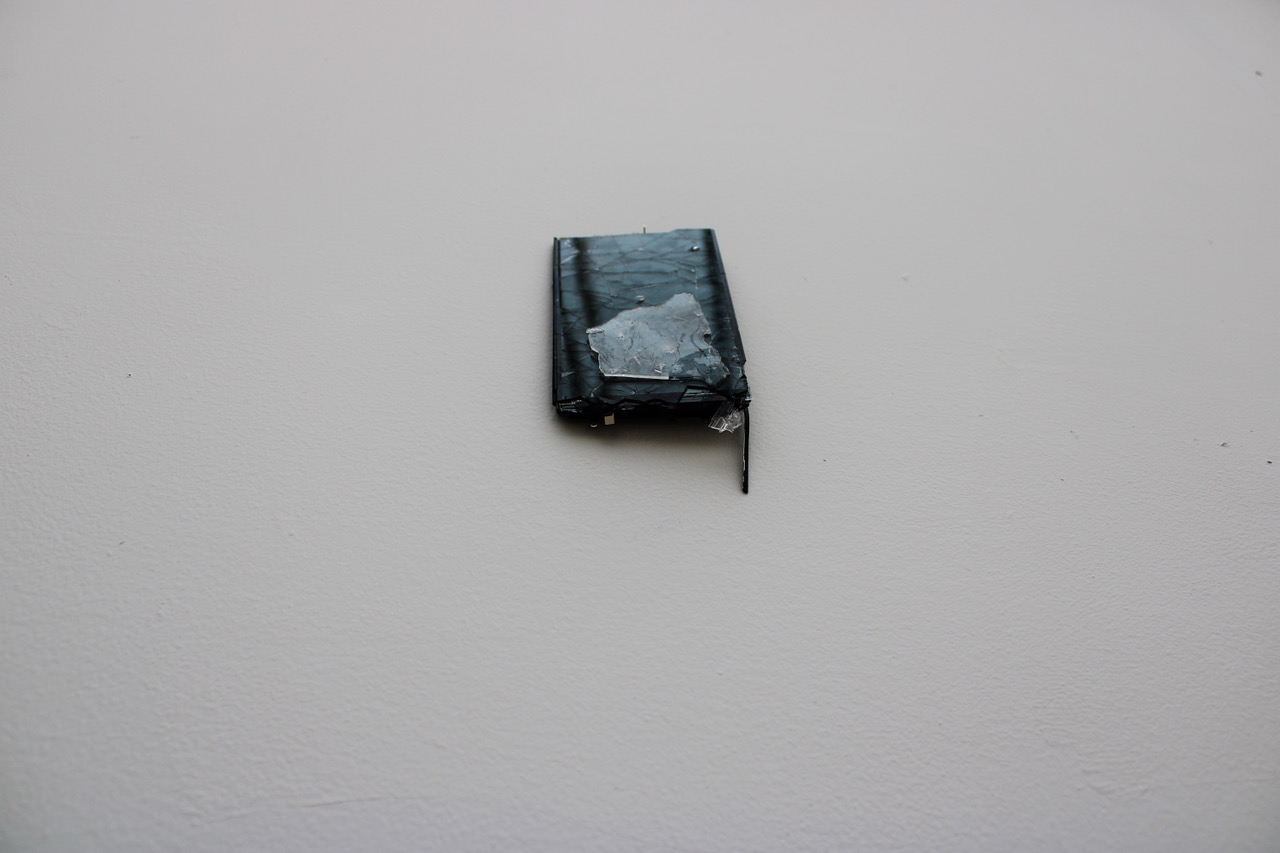Stanley Picker Gallery is delighted to host the DRHA 2022 exhibition in association with Kingston School of Art’s Digital Research in the Humanities and Arts 2022 (DRHA) conference.
The DRHA 2022 exhibition interrogates the parallel emergencies that define our post-pandemic world, and the protagonist role that digital technologies and science play within it. Inspired by the title of this year’s conference, Digital Sustainability: From Resilience to Transformation, the artworks featured in the exhibition consider existing challenges while, also, inviting us to speculate on what might come next. Using a variety of digital and analogue media, the artists of DRHA 2022 explore issues and ideas that vividly reflect this time of profound change for humanity and our planet: climate crisis; post-digital materiality; the human body within and beyond virtual milieus; non-human worlds; social media narratives and narratologies; post-apocalyptic aesthetics and catastrophic spectacles; data visualisation and biases; AI and corporate culture. Collectively, the artworks included in the exhibition suggest that although new models of creating and co-existing are rapidly emerging, moving from resilience to transformation may only be achieved through developing a holistic view of our relationship with digital technologies; namely, through understanding both their dormant potentialities and their multiple black boxes.
Curated by Dr Bill Balaskas
Director of Research, Business and Innovation, School of Arts, Kingston University
Participating artists: Pat Badani, Gianluca Balla, Jennifer Gradecki and Derek Curry, Marika Grasso, Irini Kalaitzidi, Sam Kaufman, Jonathan Kimberley, María Mencía, Kat Mustatea, Triantafyllia Ntouroupi, El Putnam, Toni Sant and Enrique Tabone, Varvara & Mar
Pat Badani
Pat Badani, Bichi Project: Bichicuchitu & Bichicu-Chow (2019-2020), 3D computer animations shown as looped single channel video.
Inspired by forms of animism, herbalism, panpsychism, and the care of sustenance networks, Badani’s 3D animations explore the intersectionality of the climate crisis and the COVID-19 pandemic.
In 2019, a bio-based symbiotic interaction unfolded in Badani’s incubator when mold took over decomposing vegetables and fruits, creating trans-species assemblages. The DIY lab experiment established a discreet sustenance network between 3 actors (bio-sculpture material / mold and fungi / human facilitator), suggesting a system in which different bodies, organisms, and species were in the process of becoming with each other through resilience and transformation – inspiring “Bichicuchitu” and “Bichicu-Chow”.
Pat Badani (b. Argentina) draws from the fields of art, science, and technology to explore the intersectionality of environmental and social justice issues. She uses food to create artistic arguments that blend aesthetics and criticism, charting connections between theories related to art as object, as medium, and art as critique of political and technological networks.
Gianluca Balla
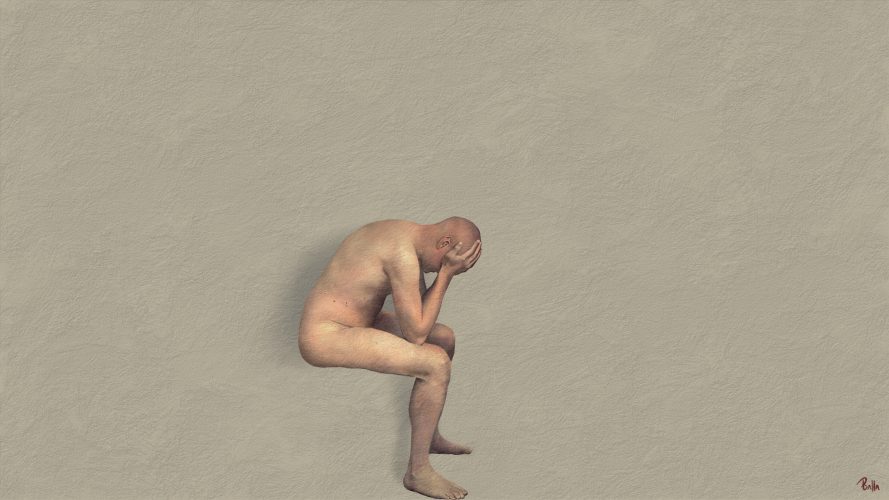
Gianluca Balla, Vuoto (2022), Digital Painting.
Vuoto (Italian word for Empty, Void, and Meaningless) is a self-portrait made in Adobe Photoshop as a digital painting. The painting is accompanied by a time lapse video edited in Adobe Premiere Pro which shows the painting process – the artist has embedded the noises of the London studio flat where he lives as a background track. The work is inspired by the isolation that Covid-19 imposed upon the population and its psychological consequences.
Gianluca Balla is an academic in Games Art and a transmedia content producer and writer. He completed a Ph.D. at the University of York, and he is the founder of the production companies Whip Ma Whop Ma Film and Transmedia Tale. Balla wrote, produced, and directed several shorts which have been screened in various International Film Festivals.
Jennifer Gradecki and Derek Curry
Jennifer Gradecki and Derek Curry, Infodemic (2020), Neural network-generated video.
Infodemic is a neural network-generated video that questions the mediated narratives created by social media influencers and celebrities about the coronavirus. The speakers featured in the video are an amalgam of celebrities, influencers, politicians, and tech moguls that have contributed to the spread of misinformation about the coronavirus by either repeating false narratives, or developing technologies that amplify untrue content.
Derek Curry and Jennifer Gradecki are media artists who have been collaborating since 2009. Their artistic research critiques technological solutionism by reverse-engineering technologies to reveal underlying assumptions and problems that arise through implementation. In their practice, they often use methods from media theory and science and technology studies as a means for critical engagement. Their work has focused on financial instruments, dataveillance technologies, artificial intelligence, and social media misinformation.
Marika Grasso
Marika Grasso, Touched Screens (2022), Medium: Touchscreen, gesso, acrylic, resin, cotton, silk, silicon, white powder.
The installation Touched Screens includes a set of artefacts shaped as the touchscreen, which could be placed in the gallery space in an unusual position, concerning the human body, such as the floor, ceiling, and the top portion of the wall. The touchscreens placements aim to create a distance between the person and the sleek disrupted surface of the screen. To suggest thinking by the senses, the distance between the eye, the hand, and the object, which extend to something that is not easily reachable.
Marika Grasso is an artist and a Ph.D. candidate at Sheffield Hallam University, funded by Lab4Living, Research England, with ‘The 100-year life and the Future Home’ grant. Her practice focuses on a material practice-based approach and Touch as an interactive tool to explore materiality and the self. She is based in Sheffield with an interdisciplinary approach, inspired by Neuroscience, textile craft and technology.
Irini Kalaitzidi
Irini Kalaitzidi, As Uncanny as a Body (2021), Video.
As Uncanny As a Body is a video work which documents the constant transition of a dancing body from an abled human state into a glitched, injured, unspecified one. Based on the development and use of a deep learning model, the visual data of a dancer are processed, and figures that manifest this in-between state are produced.
Irini Kalaitzidi is a dance artist, researcher and educator who works with technology, creative coding and machine learning to explore critical and caring modes of engaging with the body. Her practice aims to unsettle our perception of the anthropomorphic dancer and speculate on its possible becomings beyond dualisms and disciplinary boundaries. She has presented her works, be they dance performances, videos or research articles and talks in Athens, London, Berlin and Kyiv, within cultural institutions and platforms like Somerset House, International Journal of Performance Art and Digital Media and Onassis Cultural Center, to name a few.
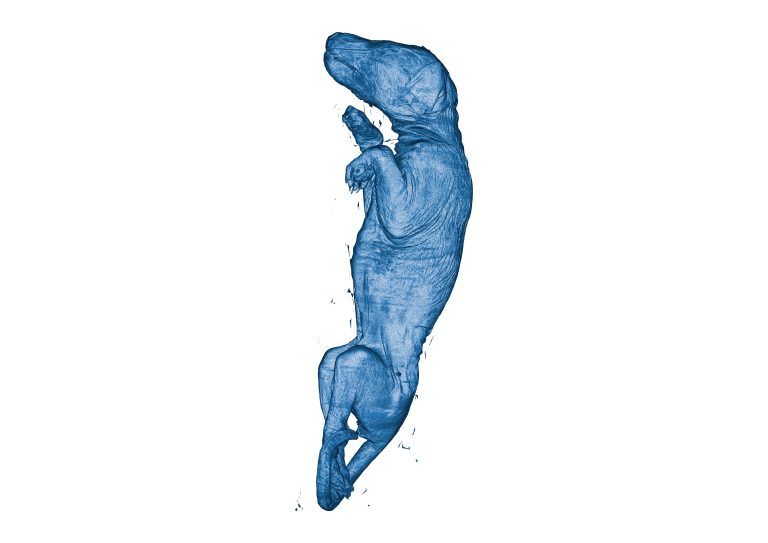
Sam Kaufman, Residue (2022), Steel, copper, aluminium, plastic, 3D printed filament, latex tubing, CT scan data, inkjet on paper.
Residue operates on the relationship between digital post-production and the production of animals after their death. To post-produce is to enter into a particular relationship with time, to construct a speculative future after the fact. This installation consists of a re-photographed and mounted CT scan of the extinct thylacine (also known at the Tasmanian tiger) made available by researchers at the University of Melbourne.
Sam Kaufman is a filmmaker, visual artist and PhD Researcher at Kingston School of Art. His research is currently focussed on how theories of nonhuman life-worlds can come to bear on contemporary artists’ moving image. His interests include ecology, animals, post-humanism, biosemiotics and emerging materialisms. His work centres on how images – still, moving, and in-between – might form the basis on which new kinds of thought can develop. He works with lens-based technology, remote sensing, coding, textiles, printmaking, the written word, 3D models and machine learning to consider the range, reality and exigencies of images in the construction of the contemporary moment.
Jonathan Kimberley
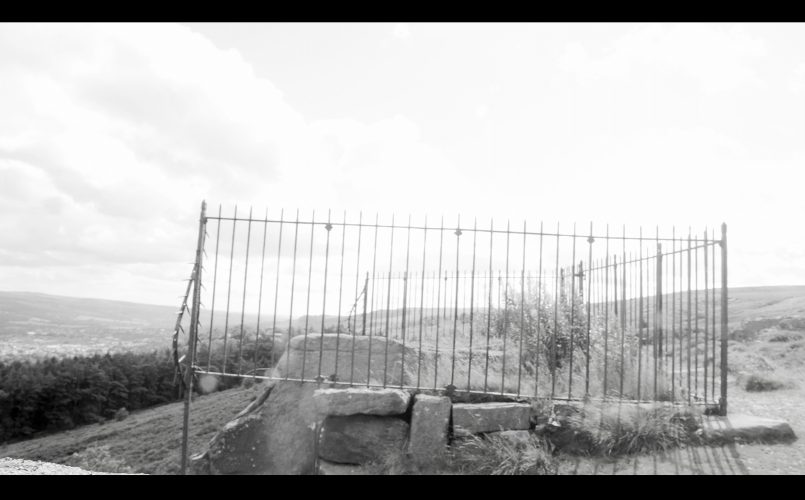
Jonathan Kimberley, Diminished Culture Until we Whitefellas Decolonise Ourselves (2022), 3.5min 1080p HD Video.
As a descendent of a First Fleet convict from the UK who arrived on the continent of Australia in 1788, and subsequently as a free settler to lutruwita (Tasmania) in 1808 – the project reflects on a profound personal sense of loss of cultural knowledge within Kimberley’s own cultural originary in the UK and Europe; and 30 years of decolonial transcultural art praxis in Australia.
Jonathan Kimberley is an Artist, Curator, Public Art Programs Manager and Arts Writer. Over the past 30 years he has mobilized a unique transdisciplinary career in the contemporary art sector, combining rigorous intercultural art practice, national and international curatorial projects and critical art writing. He specializes in working collaboratively with artists and organisations at the complex decolonial intersection of local <> international contemporaneity. He develops nomadic artistic and cultural projects that combine digital and analogue technologies, ephemeral and migratory praxes, installation, sound, performance, visual art and writing.
Maria Mencia
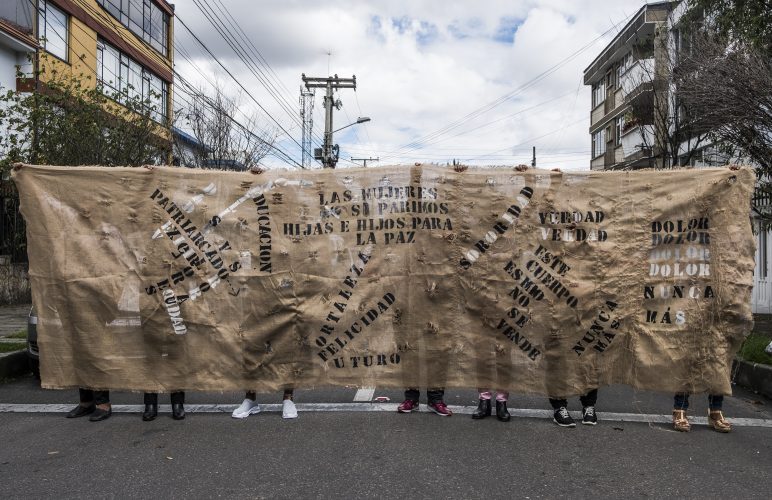
Maria Mencia, Invisible Voices (2020), Digital media.
Invisible Voices is one of the outcomes from the project ‘Memory, Victims, and Representation of the Colombian Conflict’, AHRC funded and undertaken in conjunction with an interdisciplinary team of experts working in different fields of research, to address the issue of the representation of the conflict and victims in Colombia’s 60-year-long conflict. Above all, it focuses on exploring and incentivising new means of awareness with regards to the self-representation of women victims.
María Mencía is an Associate Professor in Media Arts and Digital Poetics at Kingston School of Art, London, UK. She is on the board of directors of the international organisation of Electronic Literature (ELO). Her creative research practice has been exhibited worldwide, and it is published in the Electronic Literature Collections ELC1, ELC4, the ELMCIP Anthology of European Electronic Literature and Anthology of Electronic Latino American Literature Lit(e)Lat. She has been the recipient of The Robert Coover Award of Electronic Literature for her work “The Winnipeg: The Poem that Crossed the Atlantic” and The N. K Hayles Award for Criticism of Electronic Literature for her publication “#WomenTechLit”.
Kat Mustatea

Kat Mustatea, Voidopolis, (2020-2021), printed book, two-channel video installation.
Voidopolis is a loose retelling of Dante’s Inferno, informed by the grim experience of wandering NYC during a pandemic. The images are created by digitally “wiping” humans from stock photography and the text is generated without the letter ‘e’ using a modified GPT-2 text generator. Meant to culminate in loss, the book’s pages are further decayed via an algorithmic process resembling the fading of memory, and can only be deciphered through an AR app—but only for a time.
Kat Mustatea is transmedia playwright and artist based in New York City whose language and performance works enlist absurdity, hybridity, and the computational uncanny to dig deeply into what it means to be human. Her TED talk, about puppets and AI, takes a novel approach to the meaning of machines making art. She is currently an Artist in Residence at Harvestworks Digital Media Arts Center, a member of The Orchard Project’s 2022/23 Greenhouse Lab, and a project fellow at NYU’s ITP/IMA Program. Her hybrid work, Voidopolis, won the Arts and Letters Unclassifiable Prize for literature and the Dante Prize for art, and is forthcoming in 2023 from MIT Press as an augmented reality book.
Triantafyllia Ntouroupi

Triantafyllia Ntouroupi, Greetings from the Deepworld (2021), digital print, 3D animation video, Augmented Reality applications, postcards.
Greetings from Deepworld uses augmented reality to create an immersive environment which invites the users to reflect on their role as both spectators and participants of a global catastrophe. The postcards are a reminder of the transient nature of our existence and how we view our world as visitors. Geographers, anthropologists, and sociologists who research disasters suggest that human practices, over long periods, enhance the materially destructive and socially disruptive capacities of geophysical and hydro-meteorological phenomena, technological malfunctions, and epidemics. Today images of disaster are instantly delivered to our phones, turning catastrophe to a grotesque global spectacle. Artists often try to make sense of catastrophic experiences. The question is whether artworks inspire a sense of how catastrophe might be overcome; whether seeing others’ suffering will rouse us to the indignation and action, or instead desensitize us, reinforcing our indifference.
Triantafyllia Ntouroupi is currently studying at the Athens School of Fine Arts. She has a PhD in Molecular Biology and extensive postdoctoral research experience in Greece and abroad. Her artistic work involves 3D animation, augmented reality applications, soft and kinetic sculpture, video, painting, and collage.
El Putnam

El Putnam, Emergent (2020-2022), Generative Animations.
The body is the database of lived experience. Emergent is a generative media work that includes animations, sound compositions, and live video processing, with some animations driven by data collected from a consumer fitness tracker worn since the start of the COVID-19 pandemic in 2020. As a portrait of experience of the COVID-19 pandemic through the data body (as both body of data and body producing data), Emergent engages with the memories of the flesh, becoming the impetus for aesthetic encounters through digital performance. Instead of focusing on the intended use of the fitness tracker as a technical object, Emergent draws attention to the gaps in data collection, goals not met, and the capacity of physical activity to exceed sensory quantification and collection.
Dr. EL Putnam is an artist-philosopher working predominantly in performance art and digital technologies who exhibits regularly in Ireland, Europe and the United States. Recent publications of note include an affiliated issue of the International Journal of Performance Art and Digital Media, co-edited with Dr. Conor McGarrigle (June 2021), and the research monograph The Maternal, Digital Subjectivity, and the Aesthetics of Interruption (Bloomsbury 2022). She is a member of the Mobius Artists Group (Boston) and the International Association of Art Critics. She is Assistant Professor of Digital Media in Maynooth University.
More at elputnam.com
Toni Sant and Enrique Tabone

Toni Sant and Enrique Tabone, Naked Data (2022), Wikidata, video and plexiglass.
Naked Data adopts an inquiring data model, applied to 30 prehistoric artifacts and fragments depicting female bodies, which are exhibited permanently at the National Museum of Archaeology in Valletta, Malta. In 2019, Digital Curation Lab Director Toni Sant and the artist Enrique Tabone started collaborating on a research project exploring the visualization of specific datasets from Wikidata for artistic practice. This research stems from a digital curation project conducted by Tabone on the women artists whose works are in the University of Salford’s Art Collection. Through data analysis, employing Wikidata tools, this work reveals how previously under-represented individuals can be given greater public visibility.
Dr Toni Sant is the director of the University of Salford’s Digital Curation Lab at MediaCityUK. His writings about media archaeology and digital curation have appeared in various books and academic journals. He is also an associate editor of the International Journal of Performance Arts & Digital Media, and an editorial board member for Body, Space & Technology. More at tonisant.com
Enrique Tabone is a UK-based artist and designer, whose works have been exhibited in the UK, Malta, Germany, China, and Turkey. She also produces collections of wearable art through the QUEstijl brand, of which she is the founder. She is currently completing a postgraduate research degree in Digital Curation at the University of Salford in the UK. More at enriquetabone.com
Varvara & Mar

Varvara & Mar is an artist duo formed by Varvara Guljajeva and Mar Canet in 2009. Often duo’s work is inspired by the information age. In their practice, they confront social changes and the impact of the technological era. The artist duo has exhibited their art pieces in a number of international shows and festivals, like MAD in New York, FACT in Liverpool, Santa Monica in Barcelona, Barbican and V&A Museum in London, Ars Electronica museum in Linz, ZKM in Karlsruhe, etc.

